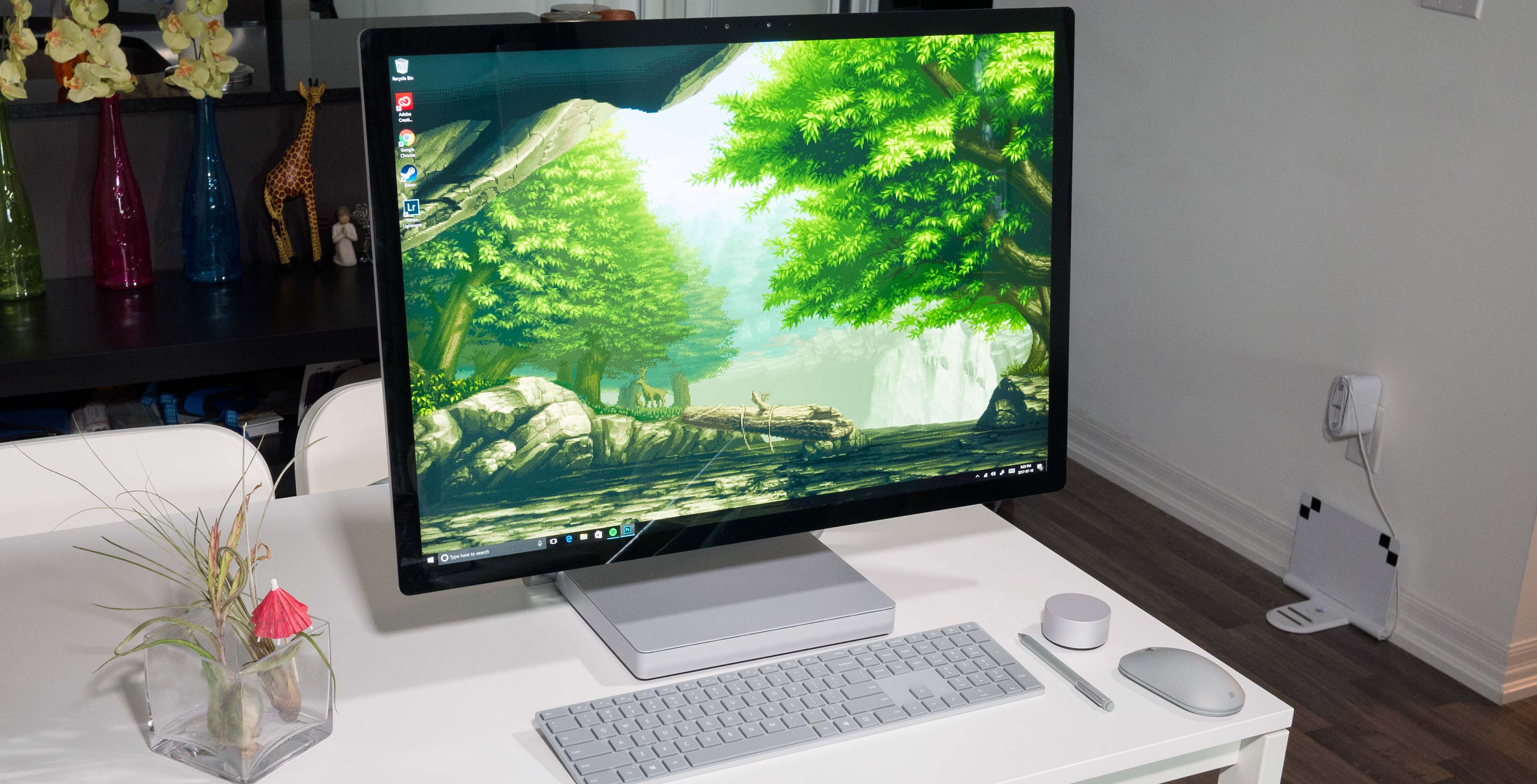
The Pros
- Stunning looking all-in-one PC
- Surface Dial is innovative and interesting
- Profile fits perfectly in most homes
The Cons
- Ridiculously expensive
- You can get a more powerful PC for cheaper
- Not upgradable
Microsoft’s Surface Studio is a difficult product to review.
It’s beautiful, stunning even, complete with an impressive zero gravity hinge that allows the computer to slide into tabletop mode from its standard upright position, one-upping, in terms of design, Apple’s current iMac models in nearly every conceivable way.
The all-in-one seamless design of the Surface Studio also exemplifies how far Microsoft’s industrial design has come since the launch of the first Surface less than five years ago.
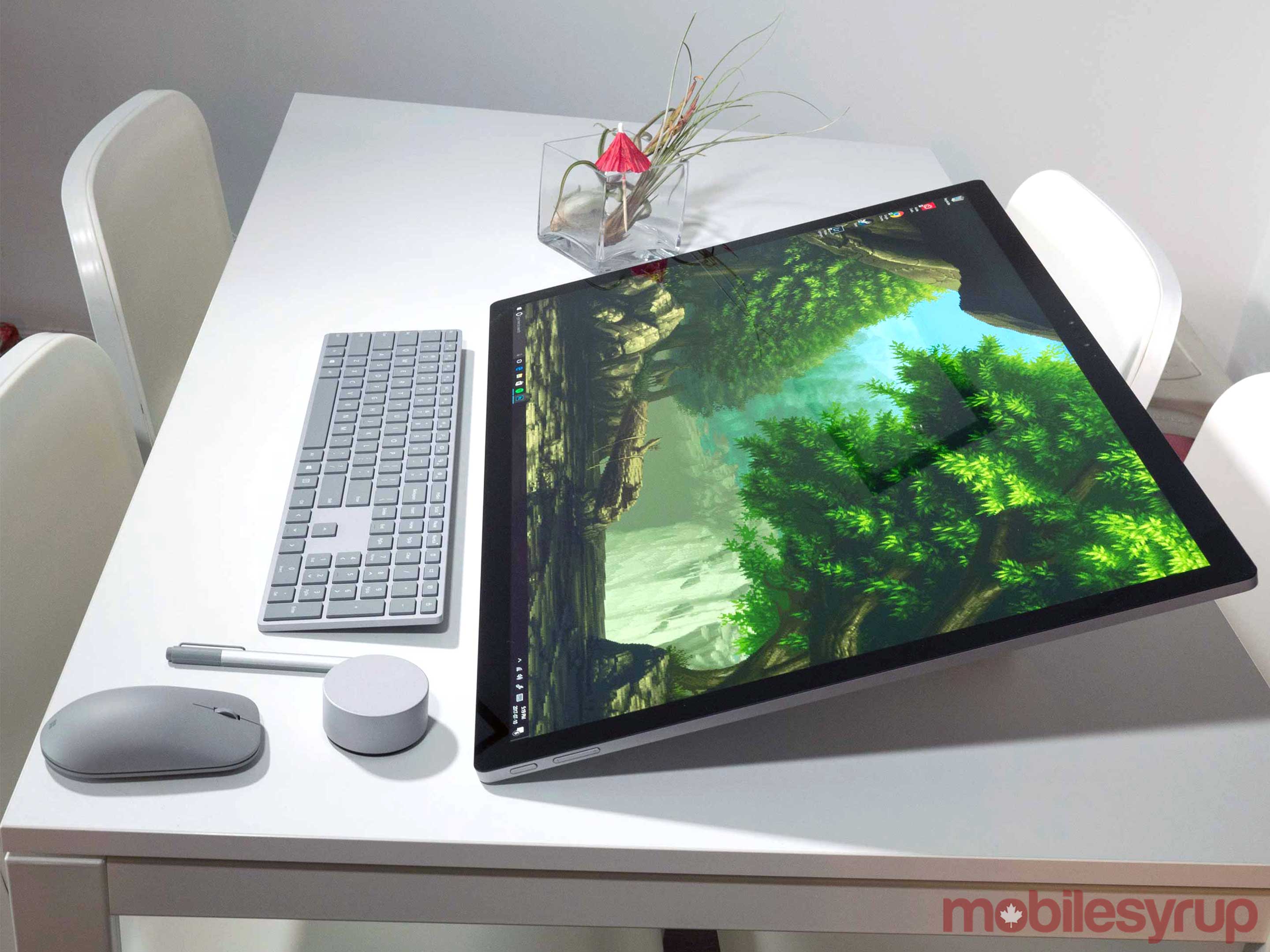
I’ve even had a smooth experience browsing the web, playing the occasional indie game and doing my day-to-day job at MobileSyrup on the device — my typical work day involves WordPress and light video/photo editing. Furthermore, despite rampant skepticism, the Surface Dial is intuitive and useful, though I do wish more apps supported it (Microsoft says additional app support is coming).
That said, I find it hard to recommend the Surface Studio. Adding further fuel to this negative outlook, I’m not sure who the device is even for considering its expensive price tag.
Specs
- Dimensions/Weight: Display: 25.1” x 17.3” x 0.5” (637.35 mm x 438.90 mm x 12.5 mm)
- Base: 9.8” x 8.7” x 1.3” (250.00 mm x 220.00 mm x 32.2 mm)
- Product weight: 21 lbs max (9.56 kg max)
- Display Screen: 28” PixelSense™ Display
- Resolution: 4500 x 3000 (192 PPI)
- Color settings: sRGB, DCI-P3 and Vivid Color Profiles, Individually color calibrated display
- Touch: 10 point multi-touch
- Aspect Ratio: 3:2
- Supports Pen and Zero Gravity Hinge
- Memory 8GB, 16GB, or 32GB RAM
- Processor: 6th Generation Intel® Core i5 or i7
- Software: Windows 10 Pro
- In the box: Surface Studio, Surface Pen, Surface Keyboard, Surface Mouse
- Storage Rapid Hybrid Drive options: 64GB SSD with 1TB HDD, 128GB SSD with 1TB HDD, 128GB SSD with 2TB HDD.
- Graphics: i5 Intel 8GB: Nvidia GeForce GTX 965M 2GB GDDR5 memory, i7 Intel 16GB: Nvidia GeForce GTX 965M 2GB GDDR5 memory, i7 Intel 32GB: Nvidia GeForce GTX 980M 4GB GDDR5 memory
Connections and expansions: 4 x USB 3.0 (one high power port), Full-size SD card reader (SDXC) compatible, Mini - DisplayPort, 3.5 mm headset jack, 1 Gigabit Ethernet port
Cameras: Windows Hello face sign-in camera, 5-megapixel camera with 1080p HD video (front), Dual microphones, - Stereo 2.1 speakers with Dolby Audio Premium, 3.5 mm headphone jack
- Wireless: Wi-Fi: 802.11ac Wi-Fi wireless networking, IEEE 802.11 a/b/g/n compatible, Bluetooth Wireless 4.0 technology, Xbox Wireless built-in
-
For Doodling, but not design
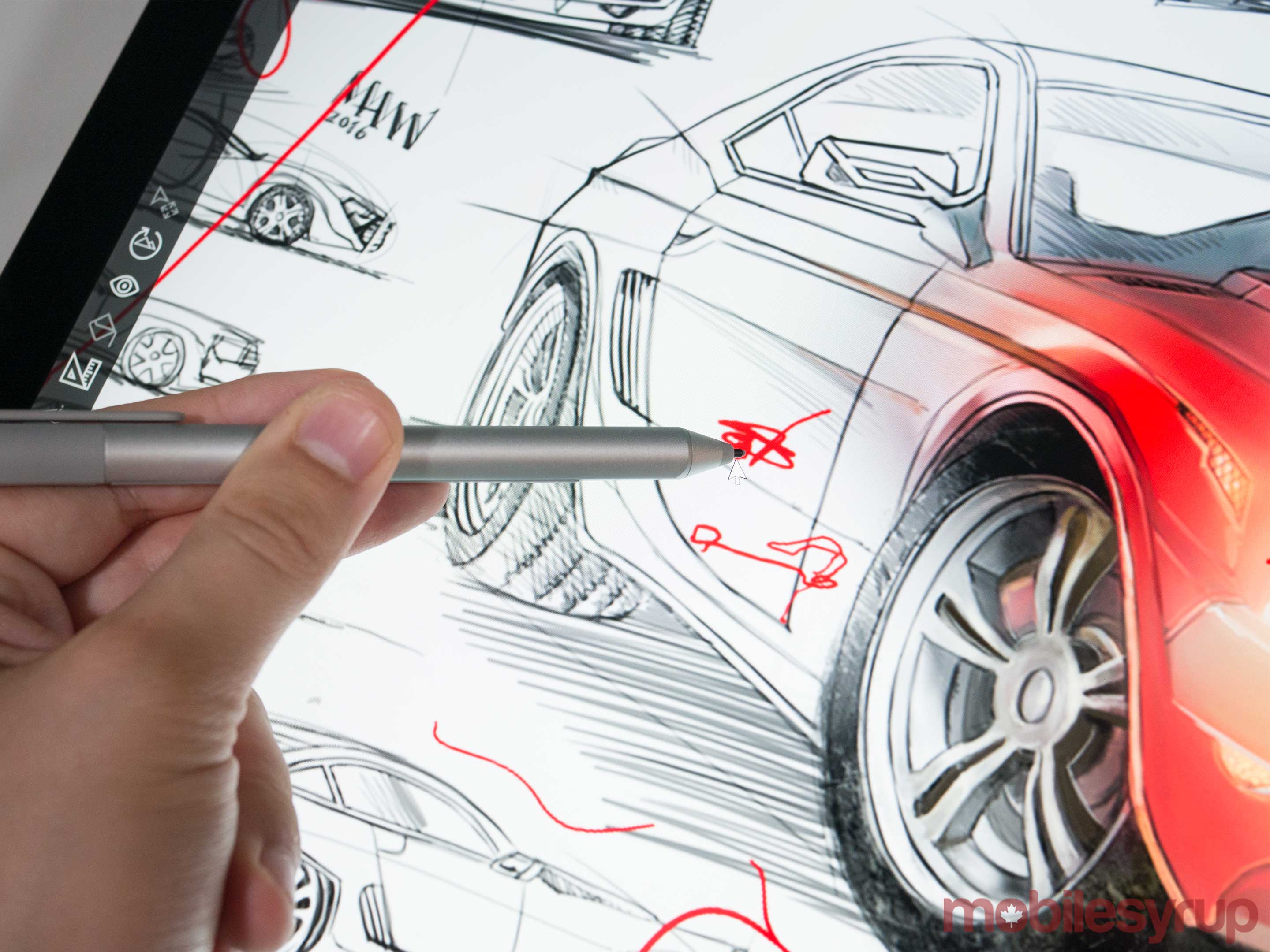
During my time with the all-in-one, I talked to a few people who work in the graphic design industry that were very impressed with the Surface Studio, but claim that its graphics card isn’t powerful enough to do everything they need for their job. Instead, they told me the Studio was great for sketching and coming up with drafts they later transferred to a Mac or more powerful PC to use for Photoshop.
So if the pricey Surface Studio and its zero gravity hinge — even the lowest model is priced at an astronomical $3,999 CAD — isn’t a graphic designer’s dream, who is it actually for?
It’s possible that families or people looking for a sleek all-in-one PC would find value in the Surface Studio if price is not a barrier. If price is a concern, however, there are cheaper, though decidedly less sleek Windows desktop PCs out there. Apple’s iMac is also a cheaper option for most, especially given that the line is now about as powerful as Microsoft’s Surface Studio depending on hardware configuration, thanks to a recent internal update.
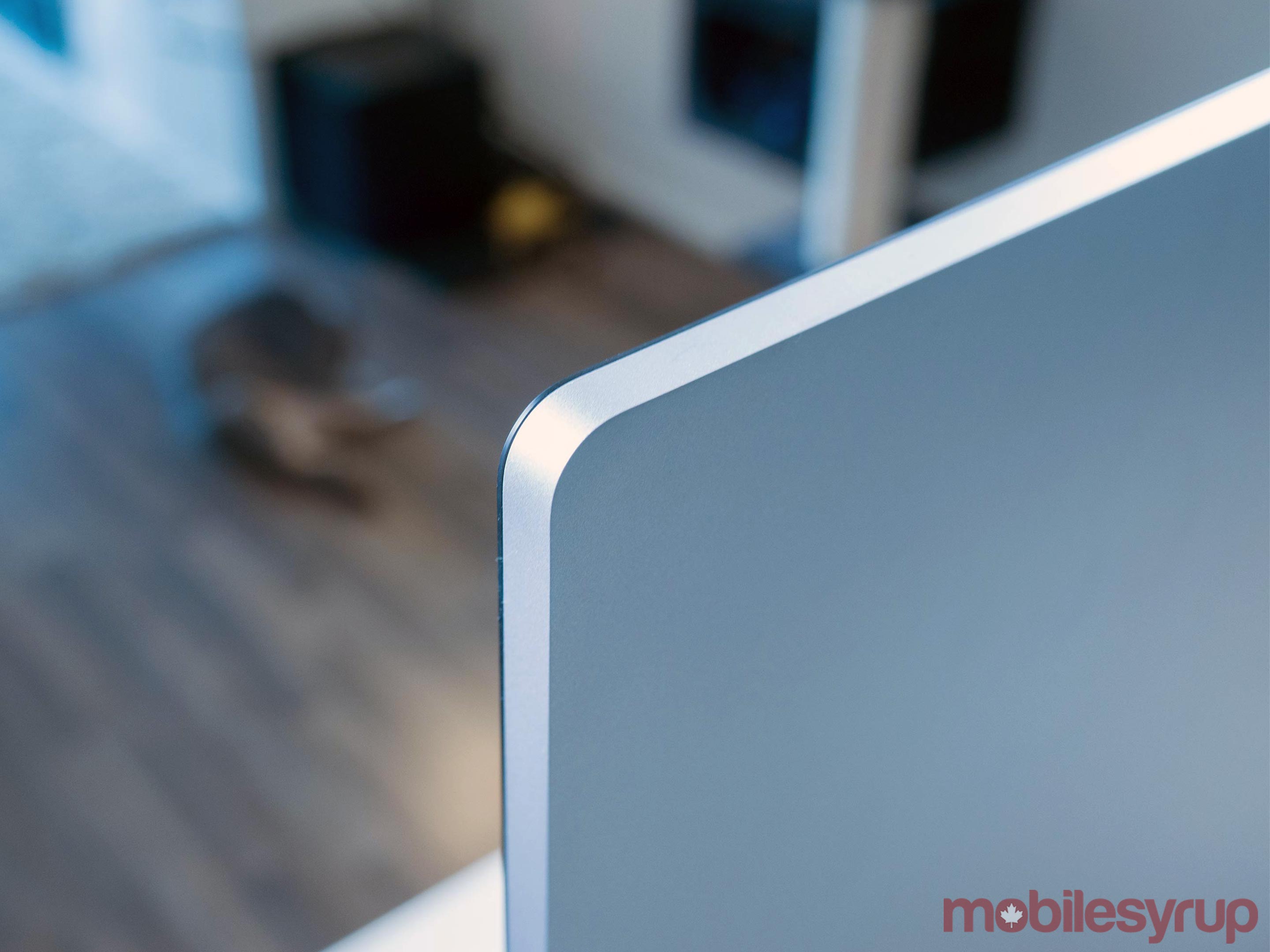
That’s not to say that the Surface Studio isn’t a capable device, especially when you consider that all of its hardware is packed directly into the computer’s minuscule base. To put the Studio’s specs in perspective, the all-in-one features a 2.7GHz Intel Core i7-6820 processor, last year’s Nvidia GeForce GTX980M, 32GB of RAM, four USB ports, SD card reader, Mini DisplayPort, 2TB of storage and an impressively high-resolution 4,500 x 3,000 PixelSense display — this is actually more detailed than a 4K display, which is borderline ridiculous.
That said, the Surface Studios’ specs are great and more than powerful enough for most people’s purposes. The issue here is price because despite the PC’s impressively sleek design, it’s possible to get your hands on a computer that features similar specs for a fraction of the Surface Studios’ cost. Also, the fact that you can’t open the Surface Studio up and improve its internal hardware in any way will likely be a significant issue for many.
Dressed to kill
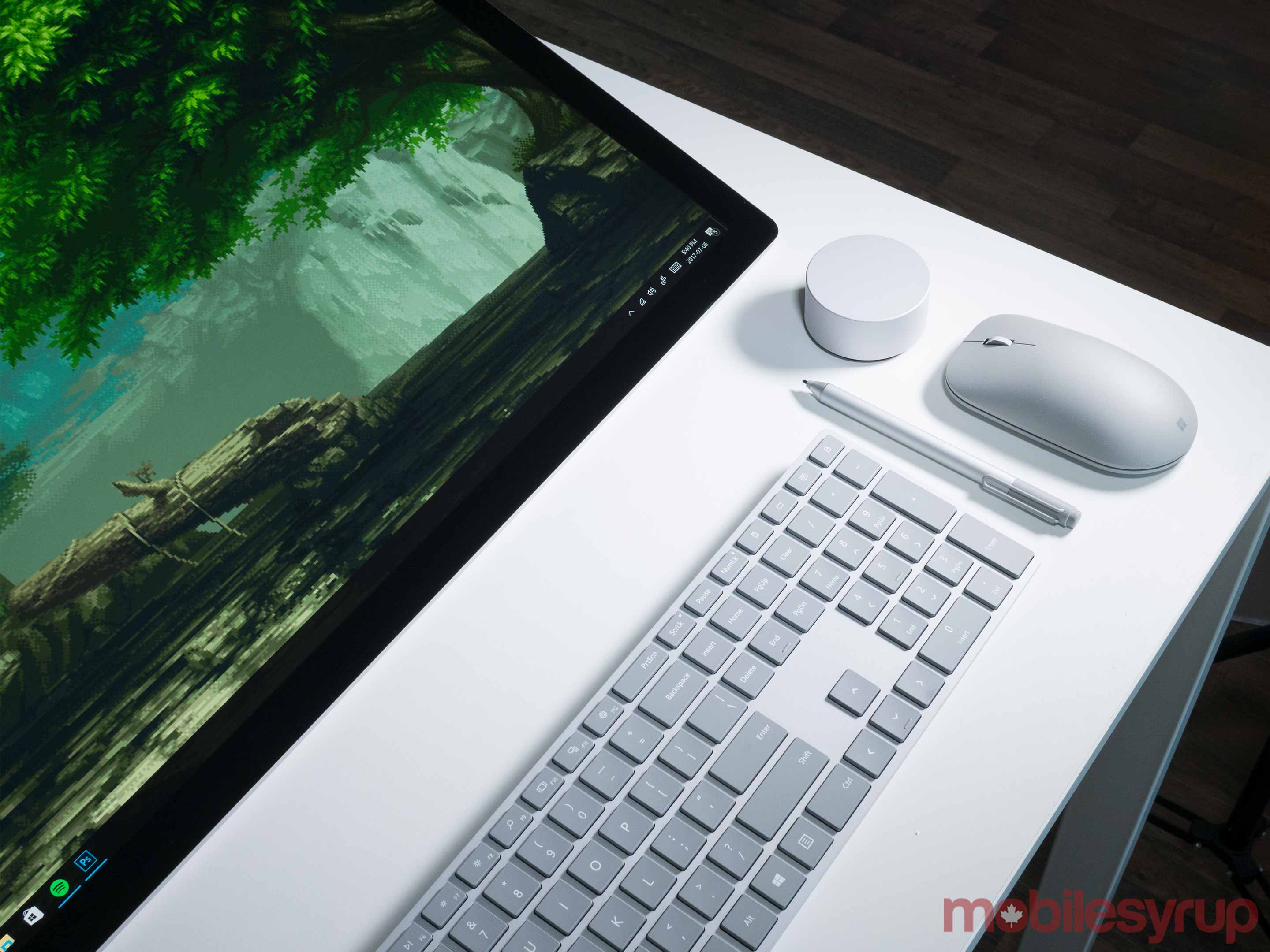
Moving all of the Surface Studio’s components to the base has allowed Microsoft to create a ridiculously thin bezel that measures in at 12.5mm (not counting the Zero Gravity Hinge bump on the back), making it slimmer than any monitor I’ve ever used.
In fact, the Surface Studio actually looks like a Surface Book that’s been shot with an enlargement ray, right down to its minimalist design and minimalist Windows logo. The only notable design element is a subtle line that wraps around the perimeter of the Studio’s base, allowing the computer’s internals contained within to be cooled.
You could argue that Microsoft has taken this minimalist aesthetic a little too far considering the Surface’s memory card reader and three USB 3.0 ports are located at the rear of the Surface Studio, thought I didn’t find this shift frustrating. Also, while Microsoft has made it clear why the company hasn’t yet adopted USB-C for its line of products, it’s still disappointing to see that despite what looks like ample space, the Surface Studio doesn’t features any USB-C ports. This means that users won’t be able to take advantage of the faster speeds ThunderBolt and faster USB-C external hard drives offer.
-
The included Surface Keyboard and Surface Mouse are decent, but not exactly comfortable if you’re more used to an ergonomic setup like myself — most people won’t take issue with them though. The computer also comes with a Surface Pen and Surface Dial. While I’m fond of the Dial and find it fascinating, few apps support it currently and spinning it to navigate web pages with Microsoft’s Edge browser, is little more than a novelty.
Thanks to the studio’s 4,500 x 3,000 pixel display and 3:2 aspect ratio, it’s possible to snap four separate programs to each corner of the screen and still have a readable view of each app, making the screen resolution feel exactly right.
‘Dialing’ for more app support
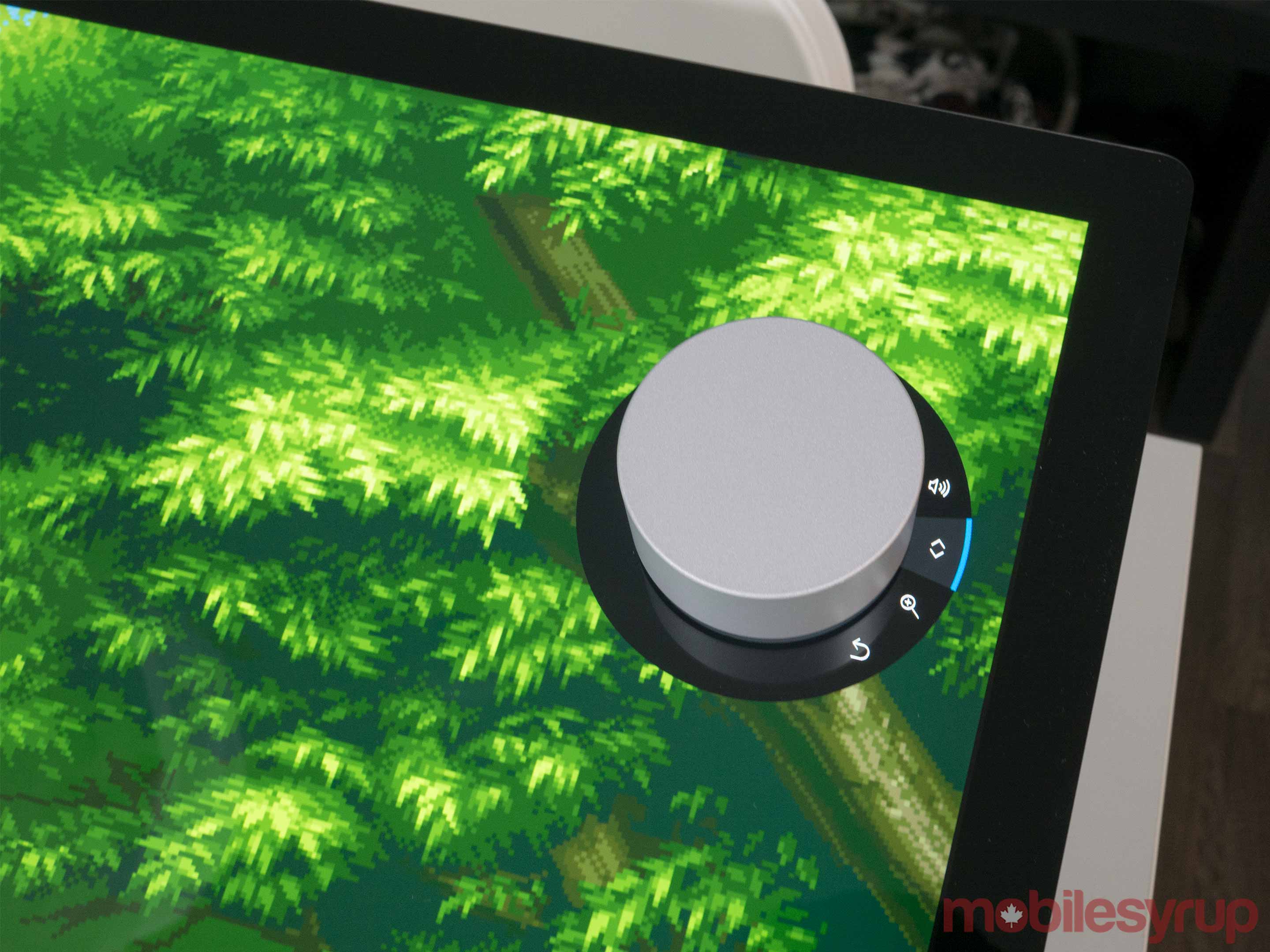
I like the Surface Dial, I really do. The mini-puck-shaped accessory connects to the Surface Studio via Bluetooth and feels high-quality. Unfortunately, however, few apps support it right now, months after the Studios’ initial release.
The only apps I found useful that support the dial are sketching app Sketchable, as well as Paint 3D, and Photoshop, but only for basic zoom support. Spotify’s Dial integration, as well as navigating Windows options like screen brightness, volume and controlling zooming and scrolling, feels like a novelty that wears off quickly. With Sketchable it’s possible to change brush sizes and undo the last stroke with a simple twist, features that make sense within the context of the Dial.
While this may sound like a minor functional gripe, the Dial actually doesn’t stay on the screen very well when the display is tilted, causing it to slide down the PC’s surface.
Pricey and stunning, but difficult to recommend
The Surface Studio is a beautiful feat of industrial design and a testament to how far Microsoft has come over the last few years when it comes to its devices. I genuinely enjoyed my time with the all-in-one and appreciated its minimalist aesthetic, as well as moderately powerful, but not quite high-end internals.
However, getting past that starting $3,999 CAD price tag is impossible, especially when getting a comparably powerful PC at a fraction of the cost is likely a better option for almost anyone, considering designers I've spoke to claim that while they're impressed with the Studio, they likely couldn't do all of their work on it: asking $4,000 for a device that can't do everything you need it to do is a tall order.
Still, I'll miss the Surface Studio and the way it fit perfectly on my desk. Perhaps if a substantial price drop happens at some point the device would be easier to recommend, but until then Microsoft's first desktop device is little more than an impressive, highly unaffordable example of the company's growing industrial design prowess.
"The Surface Studio is a beautiful feat of industrial design and a testament to how far Microsoft has come"
MobileSyrup may earn a commission from purchases made via our links, which helps fund the journalism we provide free on our website. These links do not influence our editorial content. Support us here.


